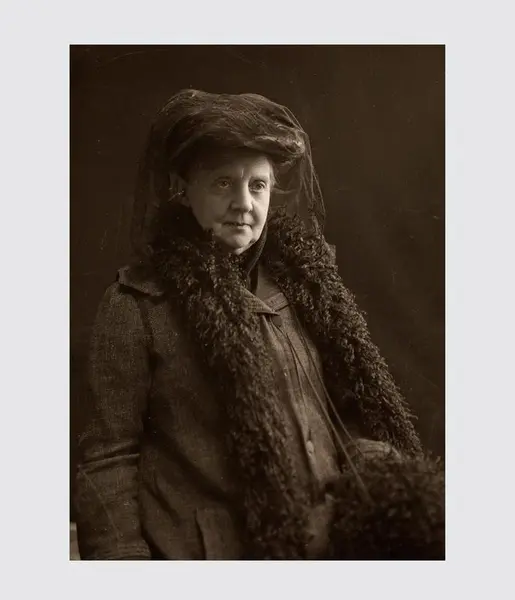- 1/1
Fredrikke Marie Qvam
Who?
Fredrikke Marie Qvam was a great talent when it came to organizations. Held central positions in all the largest women’s associations, and had close contact with several leading politicians. Travelled the country and visited various women’s associations.
Where?
Grew up in Egge in Northern Trøndelag. Moved as a married woman to the farm of Gjævran in the vicinity of Steinkjer. At the age of 50, she moved to Kristiania (former name of Oslo) because of her husband Ole Anton Qvam’s political position. Moved back to Gjævran at the end of her life.
What?
Mr. and Mrs. Qvam shared a strong political involvement. He was twice Minister for Justice and served as Prime Minister from 1902 to 1903 for the Left Wing Party. As a woman, Fredrikke had no direct access to politics. One of her tactics was to contact the wives of the leading men of the country, to gain influence. In Kristiania, she could participate more actively in politics. She followed the Parliamentary discussions from the Parliament building’s gallery, and sought out the politicians afterwards. This earned her the nickname “Queen of the Corridors”.
She soon became part of the capital’s rapidly growing women’s movement. In 1896, she took the initiative to the founding of Norske Kvinners Sanitetsforening (Norwegian Women’s Public Health Association). This organization became her life’s work. She retired from her position as chairwoman of the board at the age of 90.
Main project:
Fredrikke Qvam fought fiercely for women’s right to vote. She was also very interested in Norway’s independence. In 1905, Qvam was the driving force behind a massive collecting of signatures to support the dissolution of the union between Norway and Sweden. Because of her organizational network, she collected almost 300 000 signatures. This made many men more sympathetic to the idea of women’s suffrage, as the women had demonstrated patriotism and a political consciousness.
